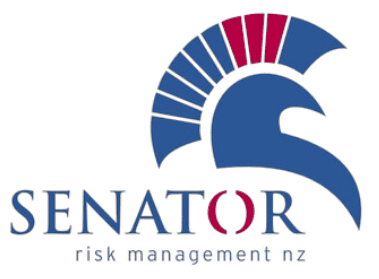This concept of risk management is often seen as a negative idea, and the cost of implementing a risk management strategy seen as a negative expense, primarily as it is seen as something that restricts activity and innovation. But it does not have to be that way at all, while it is true that a poorly thought out risk management strategy can be restrictive, in reality, a properly implemented, well-crafted risk management strategy can instead be a positive. Not only is it a tool for the protection and preservation of assets, but risk management can be used to identify new opportunities within the marketplace and discover ways to engage and exploit them.
Risk management is not by nature restrictive or negative, rather it is the process of utilizing your organization’s risk intelligence to cultivate and maintain a risk culture within the workplace that critically examines risk both internally and externally to identify the factors that shape your organization and its place in the market. That means assessing risk through the collaborative effort of every member of the organization, identifying the risk elements each perceived and developing effective solutions for managing those risks. This more holistic approach to risk management produces more effective, actionable solutions, and it is only by taking this overall view, using both internal and external threats, that a true risk profile can be created.
A good example of why it is important to take an overall approach and look at everything rather than focus solely on a single aspect, as many do when they only use internal threats in risk management, is how our own eyes work. The eye uses two kinds of vision, foveal and peripheral. Foveal vision is singular and precise, focusing on a single detail of whatever we are looking at. By contrast, peripheral vision provides a broader picture, and it is this that allows us to know where we are through a continual stream of contextual information. If we lacked foveal vision, we could not perform fine tasks, such as reading and writing, but we would be able to navigate around and know where we are in the world. Without peripheral vision, we would lose that awareness of our surroundings that allow us to know where we are and what our situation is, instead we would see the world through a narrow tunnel at the center of the eye. In other words, we need both to operate effectively, and risk management is exactly the same.
Think of risk intelligence as our peripheral vision for risk, allowing us to see the risk in the broader scope of the entire organization placing it in context and offering insight into the overall risk exposure. Losing this broader context of this risk exposure is what causes risk management to become insular and narrowly focused on internal issues, where it becomes a negative and restrictive approach, as if there were just foveal vision. Again, it is clear both are needed to truly understand not just the risk exposure, but an organization’s position within the market. While the direct and analytical approach is required to effectively react to crisis and market shifts, risk intelligence, the peripheral view, allows everything to remain in context with the organization’s position in the overall strategy. That does not mean it is solely defensive though, rather risk intelligence empowers organizations to be proactive, looking for market changes and creating points of difference with competitors that keep them ahead of the game.
While this need for a more fluid, holistic approach has always been key to effective risk management, in this new age of cyber, it is even more important than ever. New risks and opportunities appear with such frequency in the rapidly changing virtual commerce environment that only an agile, holistic approach can be effective long term. In this cyber environment, the risks are constantly evolving, and risk culture must take both internal and external factors into account when looking at business impact. In such a rapidly moving environment, only taking one aspect and adopting a singular, foveal view would endanger the business and render it redundant in this digital age.
